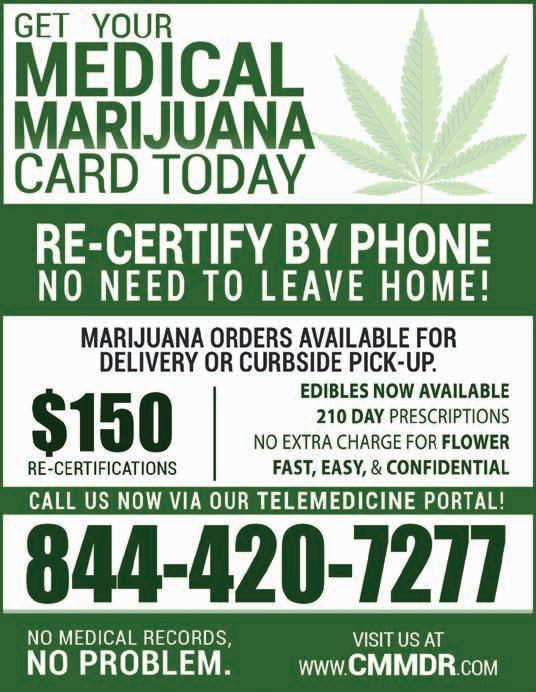
4 minute read
FRUGAL WELLNESS
from Natural Awakenings Palm Beach, January 2021
by Natural Awakenings, Broward and Palm Beach Counties, Florida
FEBRUARY Heart Health
Plus: Conscious Relationships Eco-Friendly Weddings Mindfulness & Meditation
Advertisement
MARCH Regenerative Organic Farming

Plus: Regenerative Health Care Plant Medicine for Mental Health Indoor Kitchen Garden
APRIL Climate Change Health Impacts

Plus: Healthy Home Body Detoxes & Cleanses Eco-Athletes
CONNECT WITH OUR READERS
THREE-MONTH EDITORIAL CALENDAR & MARKETING PLANNER

FRUGAL WELLNESS
Healthy Living on a Tight Budget
by Yvette C. Hammett
Living healthy on a tight budget may seem like a daunting task, but by setting up a self-care plan, prioritizing and shopping smart, the barriers can seem not quite so tall. With so many people unemployed or under-employed during the COVID-19 pandemic, the need for workable options is more important than ever.
A sports and nutrition company, My Protein, did a study that shows the average American spends $155 per month on health and fitness. That’s $112,000 over a lifetime. There are, however, strategies that can lower these costs.
Jen Smith, a financial writer and cohost of the podcast Frugal Friends, often talks about ways to spend less, save money and be in control of our spending. “You may spend more up front or more on the things you really care about, but cutting out the waste or things that are not so necessary can be a huge cost savings. This is not just for a penny-pinching, stay-athome mom. Being frugal doesn’t mean you are a cheapskate, but being wise with the limited resources that you have.”
Smith says she had a pricey membership to a cross-fit gym, but in the long run, staying in shape can greatly reduce the costs of health care and prescriptions. “Any way you can stay active is what you need to do. Spending money in any way that gets you to commit to and consistently move your body is the answer.” Focus on eating good food and moving your body, Smith says. “When emphasis is placed more on that and on self-care, you save more money.”
The National Institute on Aging recommends several ways to eat healthy on a budget: use coupons, consider purchasing store brands, know that convenience costs more, focus on priority foods, buy store-brand organics and forgo fresh for frozen organics. Sotiria Everett, a clinical assistant professor in the Department of Family, Population & Preventive Medicine at the Stony Brook Renaissance School of Medicine, in New York, agrees. “One thing
to consider is seasonality. If out of season and organic, that will increase the cost. If you want clean living and healthy eating for the planet, that doesn’t make sense either, because of the cost of fuel and the pollution involved.”
Everett recommends frequenting farmers’ markets because they offer seasonal, fresh, local, organic produce that is easier on the wallet and better for health. Her favorite tip is, “Learn how to plant foods. You don’t need a lot of space, but do need sun and water access. You can keep it organic. A couple of seeds can give you a whole season’s worth of produce.”
Jody Gatewood, assistant state nutrition program specialist for Iowa State University Extension and Outreach and a registered dietitian, works with people on tight budgets through the university’s Spend Smart Eat Smart program. “We do a lot with families with young children,” she says. “They are on a budget and concerned about having enough food to eat. One thing we teach a lot, and it helps with a budget, is to plan your meals. Look and see what is on sale at the grocery store. If there’s a big meat sale, buy it then and use it throughout. I think what happens is if we don’t plan, we go to a restaurant or get convenience foods which can really add up.”
Fresh, frozen, canned and dried foods can all have a part in our diet, she says. “I use a lot of frozen vegetables. If you use frozen, you just heat it up and it is ready to go. Protein can be expensive, so have some meals where black beans or lentils are the source of protein. Have that balance.”
As for healthcare costs, Smith recommends to those that cannot afford typical insurance or costly prescriptions in their budget to consider using manufacturer discounts and a service like GoodRx.com, which details how much prescriptions will cost at different pharmacies.
Consider using a “sharing ministry” for other costs, Smith says. With Liberty HealthShare, for example, people pay in every month and are billed like a cash payer when they have a medical bill while Liberty pays the cash. “When a doctor or hospital is billing an insurance company, they try to get as much as they can, but cash payers pay a lower amount,” she says.
Yvette C. Hammett is a freelance writer from Valrico, Florida. She can be reached at YvetteHammettHull49@gmail.com.












